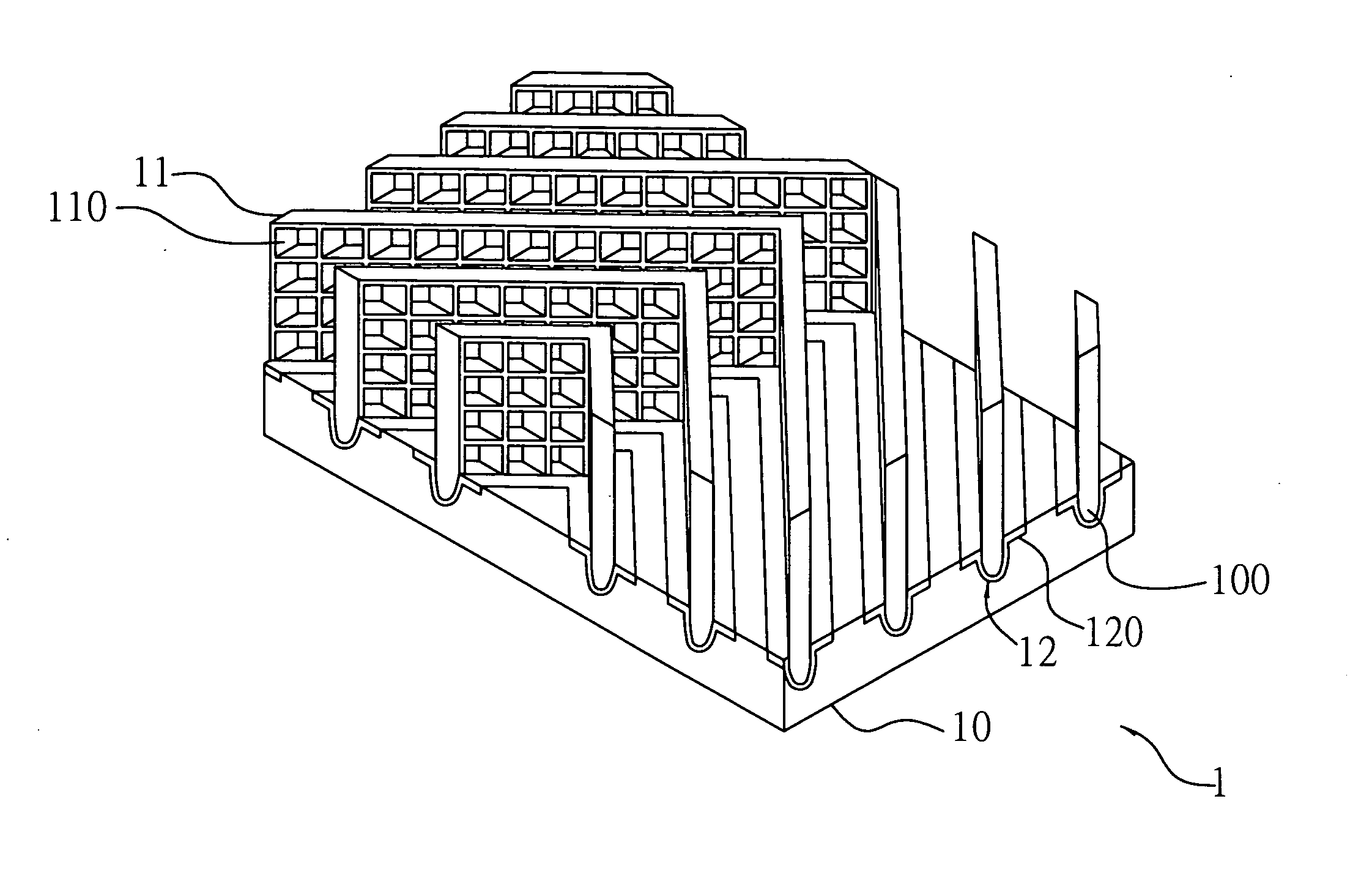Mesh-type heat dissipating structure
- Summary
- Abstract
- Description
- Claims
- Application Information
AI Technical Summary
Benefits of technology
Problems solved by technology
Method used
Image
Examples
Embodiment Construction
[0011] The preferred embodiment of a mesh-type heat dissipating structure proposed in the present invention is described as follows with reference to FIGS. 1 and 2. It is to be noted that the drawings are simplified schematic diagrams and only show components relating to the present invention. In practice, the layout of components could be more complicated. It should be understood that the following embodiment is not construed to limit the scope of the present invention.
[0012] As shown in FIGS. 1 and 2, a mesh-type heat dissipating structure 1 of the present invention comprises a base 10 and a plurality of heat dissipating fins 11 vertically disposed at intervals on the base 10, wherein each of the heat dissipating fins 11 has a plurality of meshes 110.
[0013] The base 10 has a plurality of positioning grooves 100 on a surface thereof, for positioning the heat dissipating fins 11. The positioning grooves 100 are arranged at intervals and in an oblique manner relative to edges of th...
PUM
 Login to view more
Login to view more Abstract
Description
Claims
Application Information
 Login to view more
Login to view more - R&D Engineer
- R&D Manager
- IP Professional
- Industry Leading Data Capabilities
- Powerful AI technology
- Patent DNA Extraction
Browse by: Latest US Patents, China's latest patents, Technical Efficacy Thesaurus, Application Domain, Technology Topic.
© 2024 PatSnap. All rights reserved.Legal|Privacy policy|Modern Slavery Act Transparency Statement|Sitemap


